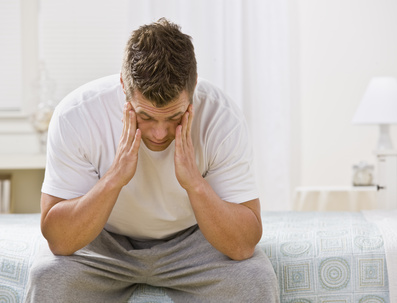A Sleep Apnea Diagnosis – What does it mean?
A sleep apnea diagnosis means that you are suffering from a sleeping disorder that affects more than 250,000 Australians.
Sleep apnea is commonly used in the United States, while in the United Kingdom it is referred to as sleep apnoea. The term is used interchangeably in Australia.
What is sleep apnea?
An obstructive sleep apnea diagnosis (OSA) means that you may suffer from the most common form of sleep apnea. Obstruction to the throat (‘pharynx’ or ‘upper airway’) is caused by the throat muscles relaxing during sleep. The muscles in the back of your throat play an important role in keeping your airways open. When these muscles relax, the airways will narrow or close as you breathe in.
Partial or complete obstruction can last from 10 seconds to up to a minute or more. When this happens, breathing stops and oxygen level drops. Your brain senses that you are not getting enough oxygen and will ‘rouse’ you from your sleep. This arousal period is brief (about 3 seconds) and sometimes you are not even aware of it. But it is enough for you to start breathing again.
In some patients, obstruction of the throat can occur several hundred times a night. The patient does not get a good night’s sleep and the resulting fatigue and tiredness can be disruptive to the patient’s mental and physical well-being.
Loud snoring can be a symptom of sleep apnea, although not everyone with sleep apnea snores. Talk to your doctor if you recognise any symptoms of sleep apnea. Your doctor will be able to advise you on the different types of sleep disorders and treatment.
Symptoms of sleep apnea
Common signs include:
• Loud snoring
• Gasping, snorting or choking during sleep
• Incidents when you have stopped breathing while sleeping (as reported by another person)
• Dry mouth
• Fatigue and tiredness
• Irritability
• Morning drowsiness or headaches
• Difficulty paying attention or focusing
• Insomnia
• Hypersomnia (oversleeping in the daytime)
Sleep apnea can be a potentially dangerous condition. Left untreated, it can lead to more serious complications like chronic fatigue, heart attacks, high blood pressure, type 2 diabetes, metabolic syndrome and complications with medication and surgery.
Treatment Options
There are many ways to combat the condition after receiving a sleep apnea diagnosis. By far the most popular is a CPAP machine. However, one of the main issues with CPAP therapy is that the masks they offer do not always sit comfortably on the face. This is why the ApneaSeal was developed in the first place. ApneaSeal is a custom moulded nose adapter that connects to your CPAP Machine. Contact us today for your obligation free consultation.

